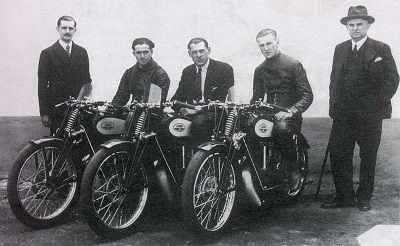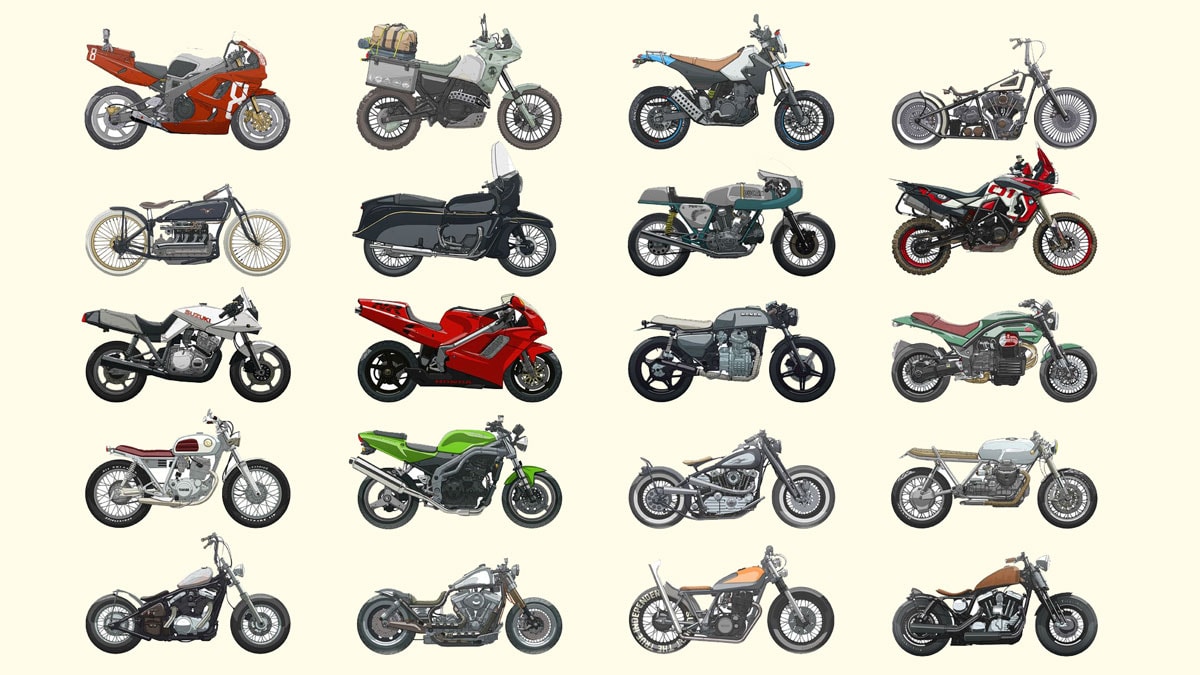The Past and Future of Motorcycles
The Evolution and Origins of Motorcycles: A Comprehensive Journey through History
The history of motorcycles is a fascinating journey that spans over a century, marked by innovation, engineering marvels, and a cultural impact that resonates worldwide. From the early experiments with steam-powered two-wheelers to the sleek and powerful machines we see today, the evolution of motorcycles reflects the spirit of human ingenuity and the pursuit of speed and freedom. This article will delve into the origins of motorcycles, tracing their development through key milestones and technological advancements.
The Birth of Motorcycles: 19th Century Innovations
The roots of motorcycles can be traced back to the 19th century, a time of rapid industrialization and experimentation. In the 1860s and 1870s, inventors and tinkerers began to explore the idea of self-propelled, two-wheeled vehicles. One notable precursor to the motorcycle was the steam-powered "steam velocipede," developed by Sylvester Roper in 1867. Although steam proved to be an impractical power source for motorcycles due to weight and efficiency issues, it set the stage for further innovations.
The Invention of the Internal Combustion Engine
The breakthrough that propelled motorcycles into a new era came with the invention of the internal combustion engine. Gottlieb Daimler and Wilhelm Maybach, two German engineers, developed a gasoline-powered engine in 1885, which paved the way for the first true motorcycle. Daimler's "Reitwagen" (riding car), built in 1885, is often considered the world's first true motorcycle. It featured a wooden frame, a single-cylinder engine, and belt-driven transmission.
The Motorcycle Industry Takes Shape
The late 19th and early 20th centuries witnessed the emergence of several motorcycle manufacturers. Companies like Indian Motorcycle and Harley-Davidson in the United States and Triumph in the United Kingdom played pivotal roles in shaping the motorcycle industry. These early motorcycles were often characterized by heavy frames, large displacement engines, and a simple, yet effective, design.
Motorcycles in World War I and II
The utility of motorcycles in warfare became evident during World War I and II. Their agility, speed, and versatility made them ideal for reconnaissance, messenger duties, and transporting troops. Many manufacturers adapted their designs to meet military specifications, further solidifying the motorcycle's place in global history.
The Post-War Boom and Customization Culture
After World War II, a surge in demand for motorcycles occurred, driven by returning veterans and a desire for personal freedom and mobility. The 1950s and 1960s saw the rise of motorcycle culture, epitomized by iconic figures like Marlon Brando in "The Wild One" and the countercultural movement associated with motorcycle clubs like the Hells Angels.
Japanese Invasion and the Sportbike Revolution
In the 1970s, Japanese manufacturers, including Honda, Kawasaki, Suzuki, and Yamaha, entered the global market with high-performance, lightweight motorcycles. This marked the beginning of the sportbike revolution, introducing innovations like disc brakes, advanced suspension systems, and aerodynamic designs.
The Evolution of Motorcycle Technology
The latter part of the 20th century and early 21st century witnessed significant advancements in motorcycle technology. Electronic fuel injection, ABS braking systems, traction control, and sophisticated suspension systems became standard features on modern motorcycles, enhancing both safety and performance.
Conclusion
The history of motorcycles is a captivating narrative of technological evolution, cultural significance, and the pursuit of freedom on two wheels. From the steam-powered experiments of the 19th century to the high-performance machines of today, motorcycles have come a long way, leaving an indelible mark on transportation and popular culture. As we look ahead, the motorcycle's journey continues, with ongoing innovations shaping the future of this enduring mode of transportation.
The State of Motorcycles Today: Modern Trends, Innovations, and Cultural Impact
In the contemporary world, motorcycles continue to play a significant role in transportation, recreation, and cultural expression. The motorcycle industry has evolved tremendously, incorporating cutting-edge technologies, embracing sustainability, and catering to a diverse range of riders. This article explores the current state of motorcycles, examining the latest trends, technological innovations, and the broader cultural impact of these two-wheeled machines.
Modern Motorcycle Trends
As we navigate the 21st century, several prominent trends define the landscape of the motorcycle industry. One notable trend is the rise of electric motorcycles. Electric bikes, with their eco-friendly credentials and quiet operation, have gained traction as an alternative to traditional gasoline-powered motorcycles. Leading manufacturers such as Harley-Davidson, Zero Motorcycles, and Energica are at the forefront of this shift, offering electric models that combine performance with environmental consciousness.
Another key trend is the increasing popularity of adventure touring motorcycles. Riders are drawn to the versatility of adventure bikes, designed to handle a variety of terrains and long-distance journeys. Models like the BMW GS series, Honda Africa Twin, and KTM Adventure bikes have become symbols of exploration and freedom for riders seeking adventure beyond conventional roads.
Technology and Innovation
In the realm of technology, motorcycles have witnessed remarkable advancements, enhancing both performance and safety. Advanced rider-assistance systems, such as traction control, cornering ABS, and electronic suspension, have become standard features on many high-end motorcycles. These technologies not only improve rider safety but also contribute to a more enjoyable and dynamic riding experience.
Connectivity is another frontier in motorcycle innovation. Many modern motorcycles are equipped with smart features, including Bluetooth connectivity, GPS navigation, and smartphone integration. These technological additions not only provide convenience but also contribute to a more connected and enjoyable riding experience.
Cultural Impact and Diversity
Beyond the technological realm, motorcycles continue to be powerful symbols of cultural expression and individualism. Motorcycle culture has evolved to encompass a diverse range of riders, from traditional enthusiasts to new demographics entering the riding community. Events such as motorcycle rallies, charity rides, and bike shows bring together riders from various backgrounds, fostering a sense of community and camaraderie.
Moreover, the representation of women in motorcycling has significantly increased, challenging stereotypes and expanding the inclusivity of the motorcycle community. Women riders are contributing to the industry as manufacturers, designers, and influencers, reshaping the narrative of motorcycling as a male-dominated pursuit.
Environmental Sustainability
In response to growing environmental concerns, the motorcycle industry is increasingly focusing on sustainability. Manufacturers are developing eco-friendly practices in production, and electric motorcycles are gaining popularity as an environmentally conscious alternative. Efforts to reduce emissions, improve fuel efficiency, and explore alternative fuels contribute to a more sustainable future for motorcycling.
Conclusion
In the present day, motorcycles are not merely modes of transportation but dynamic expressions of personal identity, adventure, and technological prowess. The industry's responsiveness to evolving trends, embrace of innovation, and commitment to sustainability ensure that motorcycles remain a vibrant and integral part of contemporary culture. As we navigate the future, the motorcycle's enduring allure and adaptability continue to captivate riders around the globe.
The Future of Motorcycles: Navigating Trends, Technology, and Sustainability
As we stand on the cusp of a new era, the future of motorcycles is poised for transformative changes. Evolving technologies, shifting consumer preferences, and global concerns about sustainability are reshaping the landscape of the motorcycle industry. This article explores the potential trajectories of motorcycles in the coming years, examining emerging trends, cutting-edge technologies, and the industry's commitment to a more sustainable future.
Electric Revolution: The Rise of Electric Motorcycles
One of the most significant developments shaping the future of motorcycles is the electric revolution. Electric motorcycles have gained substantial attention and market share, driven by advancements in battery technology, increased range, and a growing emphasis on environmental sustainability. Leading manufacturers like Harley-Davidson, Zero Motorcycles, and Tesla are investing heavily in electric models, aiming to redefine the industry and address concerns about emissions and pollution.
The benefits of electric motorcycles extend beyond environmental considerations. With instant torque delivery, low maintenance requirements, and reduced noise pollution, electric bikes offer a compelling proposition for both urban commuters and enthusiasts seeking a different riding experience. As battery technology continues to advance, the range anxiety associated with electric motorcycles is diminishing, making them a viable option for a broader range of riders.
Autonomous and Connected Riding
The future of motorcycles is closely intertwined with advancements in autonomous and connected vehicle technologies. While the idea of autonomous motorcycles may seem futuristic, prototypes and concepts are already emerging. These systems aim to enhance rider safety, reduce accidents, and provide new levels of convenience.
Connected motorcycle technologies, such as vehicle-to-vehicle communication, advanced rider-assistance systems, and real-time data exchange, are becoming integral features. Smart helmets with augmented reality displays, heads-up navigation, and integrated communication systems are enhancing the overall riding experience, fostering a safer and more connected riding community.
imageMaterials Innovation and Design
The future of motorcycles is not only about what powers them but also how they are built and designed. Innovations in materials, including lightweight composites, carbon fiber, and advanced alloys, contribute to improved performance, fuel efficiency, and durability. Manufacturers are exploring novel designs that balance aerodynamics, aesthetics, and functionality, pushing the boundaries of what motorcycles can achieve in terms of speed, agility, and comfort.
Sustainability and Environmental Responsibility
In response to global concerns about climate change and environmental impact, the motorcycle industry is doubling down on sustainability. Manufacturers are exploring alternative materials, eco-friendly production processes, and renewable energy sources in their operations. Additionally, the push for biofuels, hydrogen-powered motorcycles, and other green technologies reflects a commitment to reducing the carbon footprint of motorcycles.
Changing Demographics and Inclusivity
The future of motorcycles also includes a shift in demographics and an emphasis on inclusivity. Efforts are being made to attract a more diverse range of riders, including women, younger enthusiasts, and individuals from various cultural backgrounds. Motorcycle manufacturers and riding communities are recognizing the importance of representation and inclusivity, reshaping the narrative of who can be a rider and what motorcycling means in a rapidly changing world.
Conclusion
As we look ahead, the future of motorcycles appears to be a dynamic and exciting landscape, driven by technological innovation, environmental consciousness, and a commitment to inclusivity. The electric revolution, autonomous technologies, innovative materials, and a growing emphasis on sustainability are shaping the motorcycles of tomorrow. The industry's ability to adapt to these changes will determine its success in providing riders with not just a mode of transportation but an exhilarating and responsible way to experience the freedom of the open road.













































